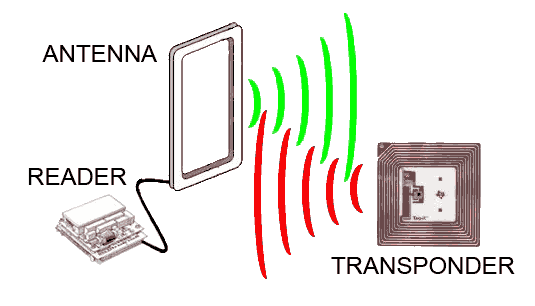"It's the arphid cloners," I said. "They're totally easy to make. Just flash the firmware on a ten-dollar Radio Shack reader/writer and you're done. What we do is go around and randomly swap the tags on people, overwriting their Fast Passes and FasTraks with other people's codes. That'll make everyone skew all weird and screwy, and make everyone look guilty. Then: total gridlock."
Arphid Cloners In Little Brother, Marcus mentions the use of arphid cloners many times. With the help of the Geek Dictionary, I found that arphid cloner is another name for radio frequency ID tags (RFID) (Alieeta). RFID "RFID tagging is an ID system that uses small radio frequency identification devices for identification and tracking purposes. An RFID tagging system includes the tag itself, a read/write device, and a host system application for data collection, processing, and transmission" (Rouse). It is essentially a tracking device that serves a multitude of purposes. Some of these purposes include:
- id cards
- library books
- supply chain management to manage item locations during shipment (includes tracking consumer products in retail and grocery stores)
- implanted into animals to track them over years (zoologists)
And the list goes on. RFID essentially tags a person with a unique serial number and transmits that data via radio waves where someone with the intention to do so, can intercept these signals and learn information about your location.
How it Works
RFID is composed of three main parts:
- antenna that scans
- transceiver that acts as a decoder of the information it receives
- transponder -- the tag
The antennas put out a short radio signal. This radiation is a form of communication with the transponder and provides the same tag with energy to communicate. This allows the RFID to be active for a long time since it powers itself without the use of batteries.
This is a great expansive article on how RFID works and includes its history: [http://electronics.howstuffworks.com/gadgets/high-tech-gadgets/rfid.htm]
 This is a great video about RFID tags:
https://www.youtube.com/watch?v=yNPDgudPmXE
This is a great video about RFID tags:
https://www.youtube.com/watch?v=yNPDgudPmXE
Sources: http://geekdictionary.computing.net/define/arphid http://www.technovelgy.com/ct/Technology-Article.asp?ArtNum=2 http://whatis.techtarget.com/definition/RFID-tagging